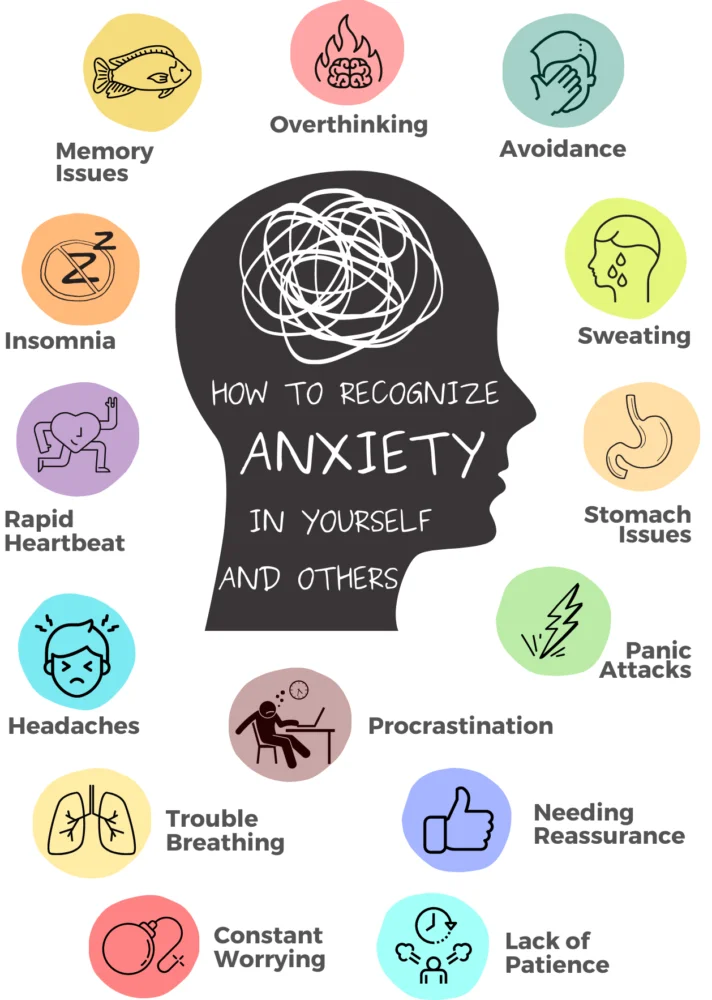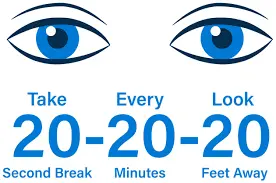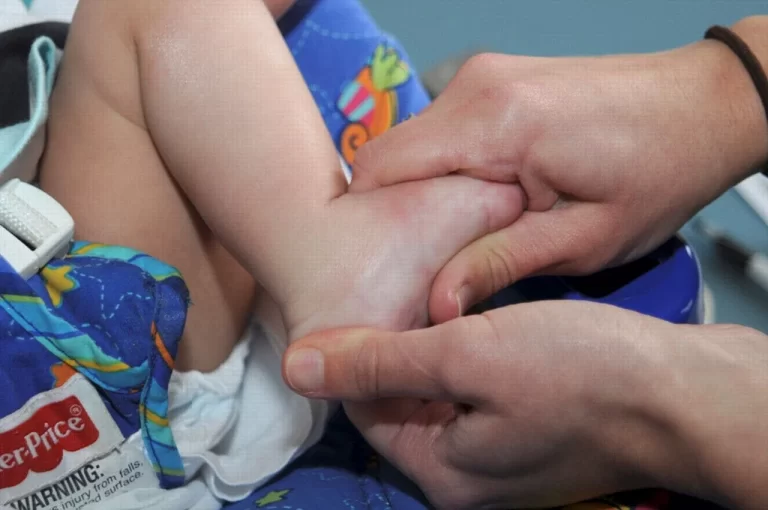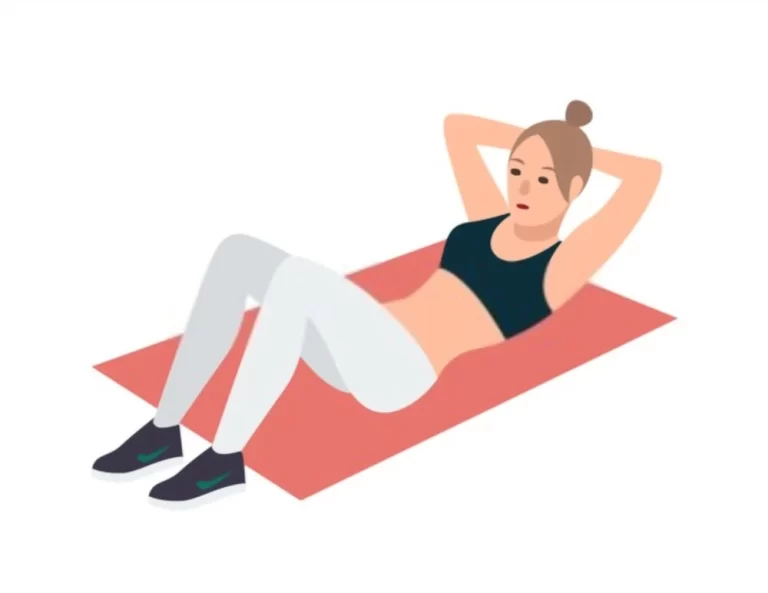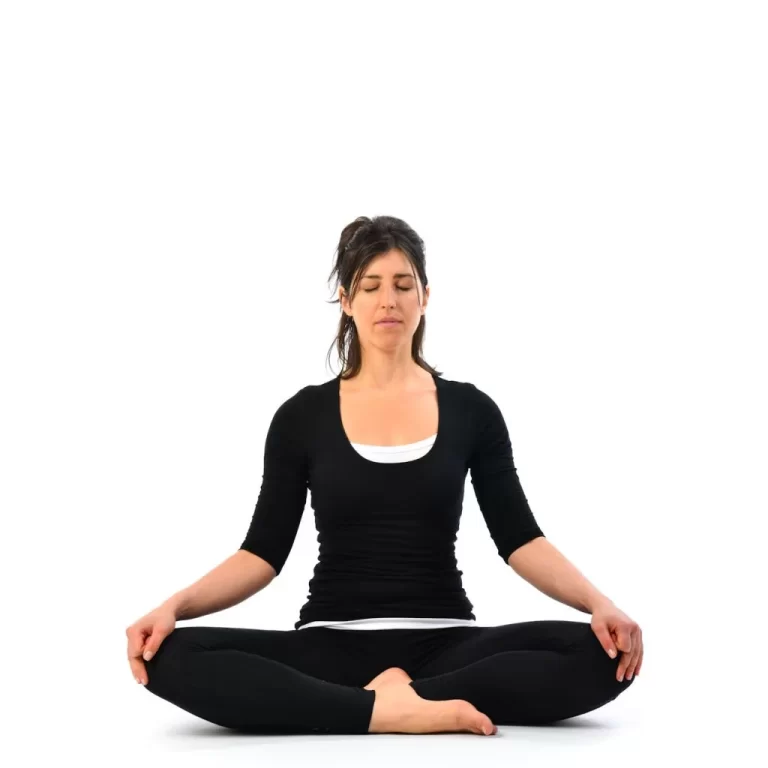12 Best Breathing exercises for anxiety
Breathing exercise is a great option to relieve anxiety and stress. There are too many breathing exercises for anxiety. In this article we discuss a few best exercises, discuss How they work, and how to do them correctly?
What is an Anxiety?
Anxiety is a feeling of dread, fear, and restlessness. It may cause you to sweat, feel uneasy and tense, and have a fast heartbeat. It can be like a stress reaction. This feeling affects every person in different ways. Sometimes, the feelings of fear and dread do not go away or get worse over time. Here, you can know about anxiety, who is suffer from this, and how to reduce it. For example, you may feel anxious when faced with a difficult problem at your workplace, before taking a test, or before making a quick decision.
What are the types of anxiety disorders?
This is an essential part of several different disorders.
These may include:
- Panic disorder: This means you feel recurring panic attacks at unpredictable times.
- Phobia: This is lavish fear of a specific situation, object, or activity.
- Social anxiety disorder: It occurs when you have an extreme fear of being noted by others in social gatherings.
- Obsessive-compulsive disorder: It means you have recognized irrational thoughts that lead you to do specific, repeated behaviors.
- Separation anxiety disorder: This disorder occurs when you fear being away from home or your loved ones. Illness anxiety disorder. This is anxiety about your health (known as hypochondria).
In addition, several mental health and medical conditions may feature anxiety as a symptom. These include:
- Post-traumatic stress disorder (PTSD): This disorder is followed by a traumatic event.
- Major depressive disorders: this is a strong relationship that exists between depression and anxiety.
- Chronic disease: Managing medical conditions like chronic obstructive pulmonary disease (COPD) and diabetes may result in anxiety symptoms.
- Inflammatory conditions: This can lead to chronic inflammation and diseases like arthritis.
- Substance use disorders: some people with anxiety symptoms may try to manage their symptoms by self medicate.
- Chronic pain: Anxiety is mostly found Trusted Source in those with chronic pain disorders.
Symptoms of anxiety:
- Anxious thinking or feelings that are difficult to control
- Uneasy
- Trouble concentrating
- Difficulty in sleeping
- Fatigue
- Irritability
- Unexplained pain in the body
How does exercise manage anxiety?
The Breathing exercises help you to put your body in a relaxed position and if your body is relaxed, your brain becomes more relaxed also. Regular breathing exercises and physical exercise may help to ease depression and anxiety by: Releasing good endorphins, natural cannabis-like brain chemicals (endogenous cannabinoids), and other natural brain chemicals that can improve your sense of well-being.
There have different breathing exercises for anxiety.
Simple Breathing Exercise
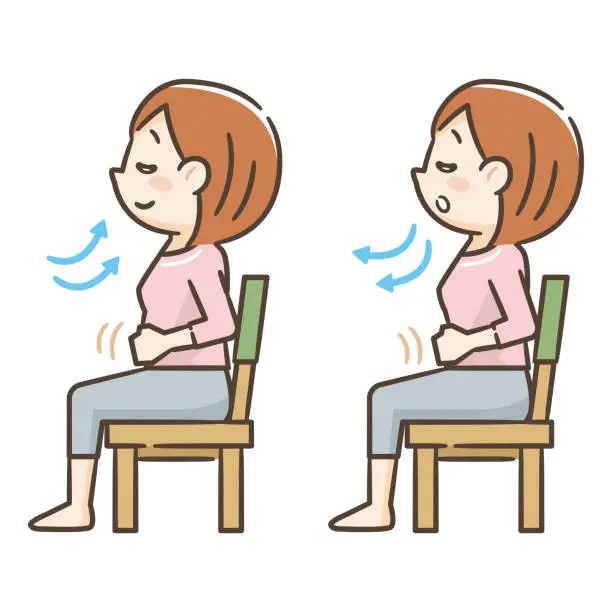
- You can do this exercise as often as needed. It can be performed in standing, sitting, or lying down position. If you find this exercise difficult or believe it is making you anxious or panicky, stop immediately. repeat on the next day and build up the time gradually.
- Inhale slowly and deeply from your nose. your shoulders should be relaxed.
- Your tummy should expand, and your chest should rise a little. breath out slowly through your mouth. As you breathe air out, purse your lips slightly but your jaw should be relaxed. You can hear a soft “whooshing” sound as you breathe out. Again do this breathing exercise.
- Do it for several minutes until you feel better.
Lengthen your exhale
- Breathing in deeply can not always calm you down.
- Taking a deep inhale is linked to the sympathetic nervous system, which manipulates the fight-or-flight response.
- But breathing out is linked to the parasympathetic nervous system, which consequences our body’s ability to relax and calm down.
- Taking too many deep breaths rapidly can lead to hyperventilation. Hyperventilation reduces the amount of oxygen-rich blood that flows into your brain.
- When you feel anxious or under stress, it is easier to breathe too much and end up hyperventilating — even if we were trying to do the opposite.
- Before you take a breath in try some breath out instead of breath in. Push all the air out of your lungs, then simply let your lungs do their work breathing air. Next, try to spend a little bit more time exhaling than you inhale. For example, if you try to breathe in for 4 seconds, then breathe out for 6 seconds.
- Try to do this for 2 to 5 minutes.
This exercise can be performed in any position that is comfortable for you, including standing, sitting, or lying down.
Abdomen breathing

- Inhaling from your diaphragm can help you to reduce the amount of work your body needs to do to breathe.
- To take a comfortable position, you have to lie down on the ground or bed with pillows beneath your head and knees. Or you can sit in a comfortable chair with your head, neck, and shoulders relaxed, and your knees flexed.
- Then, place your right hand under your rib cage and your left hand over your heart.
- Breathe in and breathe out through your nose, noticing how or if your abdomen and chest move as you breathe.
- you have to move the stomach you breathe, instead of your chest. Inhaling time should be shorter than exhaling time. Practice this for 5 minutes.
Breath focus
- When deep breathing exercises are performed with some focus and slowly, it can help to reduce anxiety. You can do this exercise in a sitting or lying down position.
- Focus on how it feels when you breathe in and breath out normally. You could feel the tension in your body that you never noticed before. now inhale through your nose. Notice your tummy and upper body expanding. Breathe in whatever technique is most easy for you, and murmur if you wish.
- Practice this for five minutes, and give attention to the rise and fall of your belly. Choose any word to focus on and vocalize during your breath out. you can speak “safely” and “calmly” can be effective.
- Imagine your breath washing over you like a gentle wave. Imagine your breath out carrying negative and upsetting thoughts and energy away from you.
- Practice this breathing technique for up to 15 minutes daily when you are free.
Equal breathing
- Equal breathing means you are inhaling for the same amount of time as you are exhaling.
- You can perform equal breathing in a sitting or lying-down position.
- Close your eyes and give attention to the way you normally breathe for 7 to 8 breaths.
- Then, slowly count 1-2-3-4 as you breathe in through your nose.
- Breathe out for the same 4-second count.
- As you take deep breaths in and out, you feel fullness and emptiness in your lungs.
- As you continue doing equal breathing exercises, your second count may vary. Be sure to keep your breath in and breath out time is the same.
Belly breathing
- To practice belly breathing you can Sit or lie down in a comfortable position.
- Put your right hand on your chest and your left hand on your belly button.
- Inhaling from your nose, feel your abdomen rise. Keep the chest remain relatively still. Purse your lips and breath out through your mouth. Try contracting your stomach muscles to push air out at the end of the breath.
- For this belly breathing to become automatic, you will need to practice it regularly. Try performing this exercise 3 or 4 times a day for up to ten minutes.
Resonant breathing
- This breathing exercise also known as coherent breathing, can help you calm anxiety and get into a relaxed state.
- To practice, takes a lie-down position and close your eyes.
- Do not fill your lungs with too full of air.
- Breathe out for a few seconds, allowing your breath out from your body slowly and gently. Do not force it.
- Continue for up to ten minutes.
Lion’s breath
- This technique involves breathing out forcefully. To do lion’s breath:
- Come into a kneeling position, cross your ankles, and rest your bottom on your feet. If this position is not comfortable, sit in a cross-leg position. put your hands to your knees, and stretch out your arms and your fingers. inhale through your nose.
- Exhaling from your mouth, allowing yourself to speak “ha.”
- During breath out, open your mouth as wide as you can and stick your tongue out, stretching it down toward your chin as far as it will go.
- Notice the middle of your forehead (third eye) or the end of your nostrils while blowing air out.
- Relax your face as you repeat.
- Repeat the practice up to 6 times, changing the cross of your ankles when you reach the halfway point.
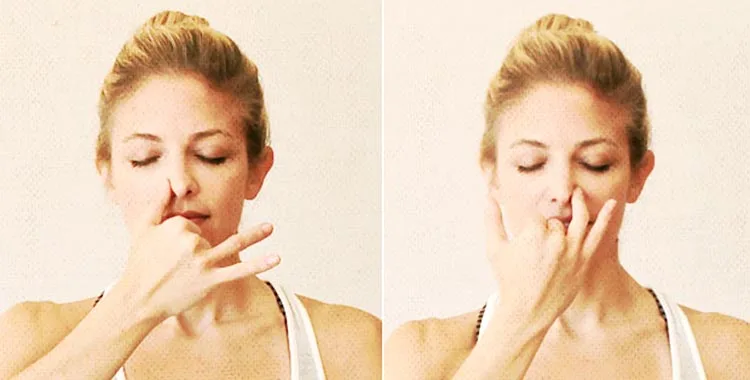
Alternate nostril breathing
- To do alternate nostril breathing, sit down in a comfortable position, lengthening your spine and opening your chest.
- Rest your right hand in your lap and raise your left hand. Then, rest the pointer and middle fingers of your left hand on your forehead, in between the eyebrows. Close your eyes, breathe in, and breath out through your nose.
- Use your left thumb to close the left-hand nostril and breath in slowly through the right. Pinch your nose closed between your left thumb and ring finger, holding your breath in for a moment.
- Use your left ring finger to close your right nostril and breath out through the left, waiting for a moment before you breathe in again. inhaling slowly from the left nose. Pinch your nose closed again, and hold for a moment.
- Now, open the right side and breath out, waiting a moment before you breathe in again. Repeat this cycle of breathing in and breathing out through either nostril up to ten times.
- Each cycle should take up to 50 seconds.
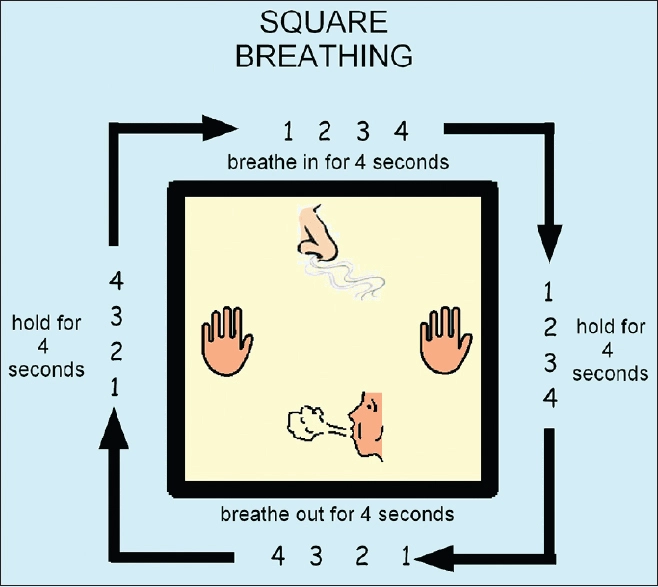
Box Breathing or square breathing
- This breathing exercise also known as four-square breathing, or box breathing is very simple to practice. If you have ever noticed yourself breathing in and breathing out to the rhythm of a song, you are already familiar with this type of paced breathing. It goes like this:
- Breathe out for four seconds.
- Your lungs should be empty for count four.
- Breathe out to a count of 1-2-3-4.
- Hold the air in your lungs for a count of 4.
- Breath out and start the pattern of a new count
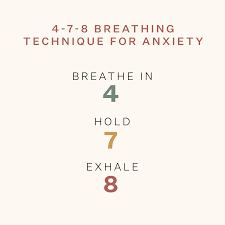
4-7-8 Breathing
- This 4-7-8 breathing exercise also known as the relaxing breath will act as a natural tranquilizer for the human nervous system. At first, it is best to perform the exercise seated with your trunk straight. Once you become more master in this breathing exercise, however, you can do it while lying in bed.
- Put and keep the tip of your tongue against the ridge of tissue behind your upper first teeth for the duration of the exercise. Completely blow air out through your mouth, making a “whoosh” sound. Close your mouth and breath in quietly through your nose to a mental count of 4. Hold your breath for 7 seconds.
- Exhale completely through your mouth, with a whoosh sound for eight seconds. Continue for up to ten minutes.
Pursed-Lip Breathing
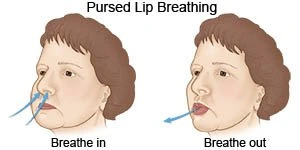
- This is a very simple breathing technique that will help you to deep breaths slower and more intentionally. This exercise has been found to benefit people who have anxiety associated with respiratory conditions like emphysema and chronic obstructive pulmonary disease.
- To do this breathing you have to Sit in a comfortable position with your neck and shoulders relaxed. your mouth should be closed, and breathe in slowly through your nostrils for 2 seconds. Breathe out through your mouth for 5 seconds, puckering your lips. your breathing should be slow and steady while exhaling.
- To do this in the correct breathing pattern, experts recommend practicing pursed-lip breathing 4 to 5 times a day.
When a person is anxious he or she takes Shallow Breathing.
- When a person is anxious, they try to take rapid, shallow breaths that come directly from the chest.
- This pattern of breathing called thoracic or chest breathing, causes an upset in the body’s oxygen and carbon dioxide levels, resulting in increased pulse rate, dizziness, muscle tension, and other physical sensations. The blood is not being properly oxygenated, and this may signal a stress response that contributes to anxiety and panic attacks.
- Deep breathing or diaphragmatic breathing, on the other hand, stimulates the parasympathetic nervous system, which is part of the peripheral nervous system responsible for maintaining heartbeat, blood flow, breathing, and digestion.
- Deep breathing helps you to avoid the “fight-or-flight” response (acute stress response) to mentally or physically controlling situations.
- Any of the above deep breathing techniques can be useful for relieving anxiety symptoms. Experiment with a few different types to figure out which one is most effective and helpful for you.
Guided meditation
- Many people use guided meditation to relieve anxiety by interrupting patterns of thinking that perceive stress.
- You can practice guided meditation in sitting or lying in a cool, dark, comfortable area and relaxing. Then, listen to calming music while relaxing your whole body and focusing on your breathing.
- Guided meditation recordings help you through the steps of visualizing a calmer, less stressed. It may also help you to gain control over overwhelming thoughts that trigger anxiety.
- Mindfulness meditation involves focusing on your breathing pattern and pays your attention to the present without allowing your mind to drift into the past or future. Engaging in mindfulness breathing exercises helps the same purpose, which can help ease your anxiety symptoms.
- One mindfulness breathing exercise to try involves choosing a calm, including a word (“om”), positive word (“peace”), or phrase (“inhale calm, breathe out tension”) to repeat silently as you breathe in or breath out. Let’s go and relax. If you notice that your mind has diverted, take a deep breath in and gently return your attention to the present condition.
FAQ
Do breathing exercises work on anxiety?
Many Research has shown that proper breath control can significantly improve well-being, combat feelings of stress, and relieve anxiety symptoms.
Why do breathing technique help with anxiety?
The breathing technique helps to put your body in a relaxed position and, if your body is relaxed, your brain becomes more relaxed.
Which deep breathing technique is the most effective?
There have several deep breathing techniques that can offer you relief from anxiety symptoms from alternate-nostril breathing to box breathing and resonance breathing to belly breathing. Practice these different techniques and see how they make you feel comfortable. You may find that you prefer some techniques from this.
What can I do to relieve my anxiety if the breathing technique does not work?
There have many different treatment options for anxiety symptoms, from therapy to medications. So, if breathing exercises don’t work on anxiety, talk to a doctor about other options available for you.
How often do breathing techniques help you from anxiety?
Hold your breath for 7 counts. exhale for 8 counts. Try to get all the air to blow from your lungs by the time you count to 8. Do this for 4 to 7 times or until you feel relaxed.
How long should I spend on breathing exercises every day?
In starting phase, practice this exercise for 5 to ten minutes about 3 to 4 times a day. Then gradually increase the time.
How does breathing exercise affect anxiety symptoms?
When we are anxious at that time we breathe shallowly and fast, which leads our nervous system to up-regulate and we feel tense and anxious. if we are breathing slowly, it turns on the anti-stress response to relieve anxiety.

